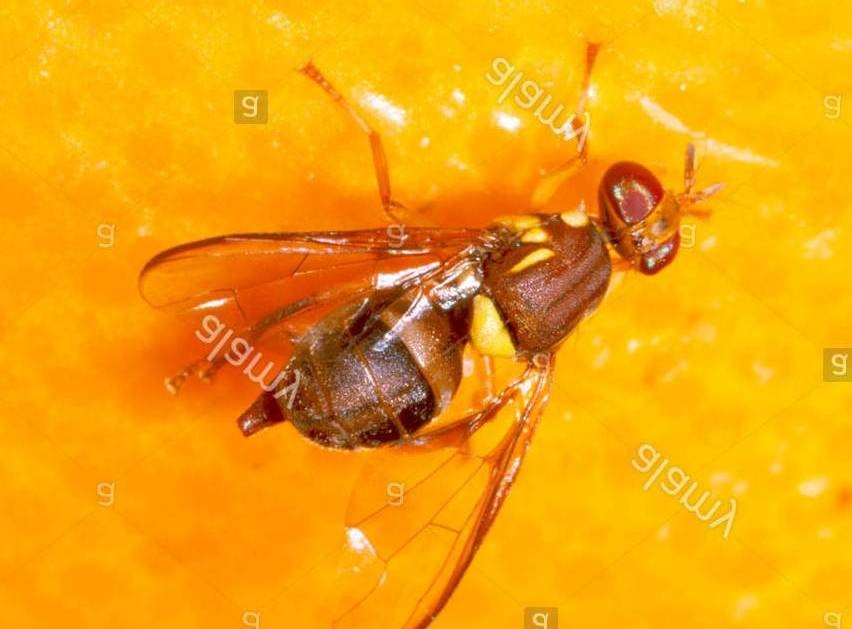Queensland fruit fly
(Bactrocera tryoni)

Description
The Queensland fruit fly (Bactrocera tryoni) is a species of fly in the family Tephritidae in the insect order Diptera. B. tyroni is native to subtropical coastal Queensland and northern New South Wales. They are active during the day, but mate at night. B. tyroni lay their eggs in fruit. The larvae then hatch and proceed to consume the fruit, causing the fruit to decay and drop prematurely. B. tyroni are responsible for an estimated $28.5 million a year in damage to Australian crops and are the most costly horticultural pest in Australia. Up to 100% of exposed fruit can be destroyed due to an infestation of this fly species. Previously, pesticides were used to eliminate B. tyroni from damaging crops. However, these chemicals are now banned. Thus, experts devoted to B. tyroni control have transitioned to studying this pests' behaviors to determine a new method of elimination. B. tyroni prefer humid and warm climates. Thus, they are most widespread in eastern Australia, as well as New Caledonia, French Polynesia, the Pitcairn Islands, and the Cook Islands. Commercial fruit production has increased in Australia, leading to an increased geographical area in which B. tyroni can reside, extending as far inland as central Queensland and New South Wales. Occasionally, there are outbreaks of B. tyroni in southern and western Australia; however, the coastal areas of Australia are relatively isolated from one another due to harsh, dry weather conditions in intervening regions that are unsuitable for B. tyroni. Therefore, other regions of Australia typically remain free of this pest as long as infected fruit is not transported between regions. After passing through a two-week pre-oviposition stage following emergence from the pupae, adult females deposit around seven eggs in a fruit puncture, and may deposit up to 100 eggs per day. Fruit punctures are holes in the skin of the fruit that allow the females to access the nutrient rich interior. Females often oviposit in punctures made by other fruit flies, such as the Mediterranean fruit fly (Ceratitis capitata), which results in many eggs occurring in a single cavity. Additionally, B. tyroni females can create their own puncture to oviposit in the fruit, called a "sting.".
Taxonomic tree:







